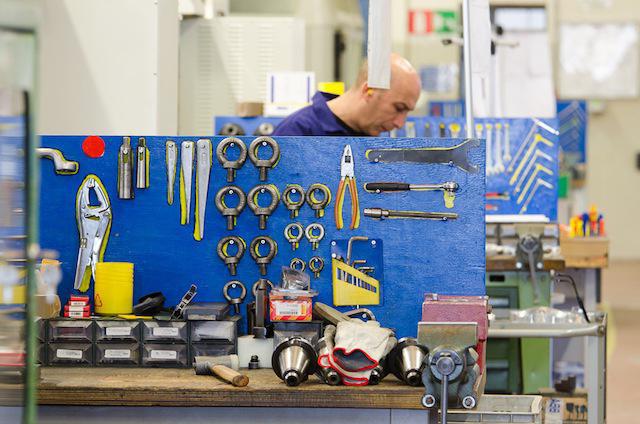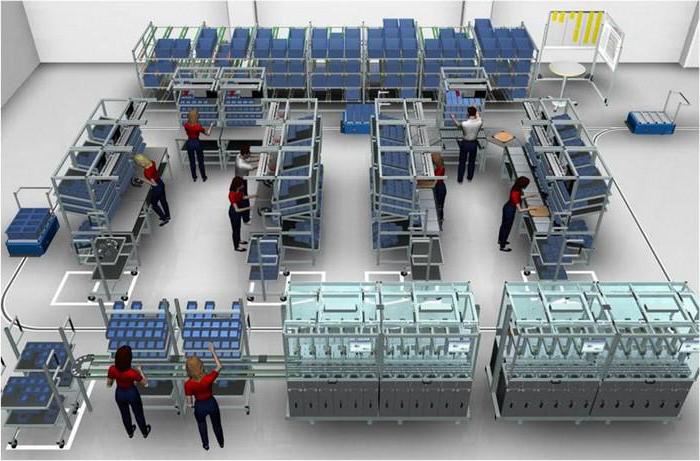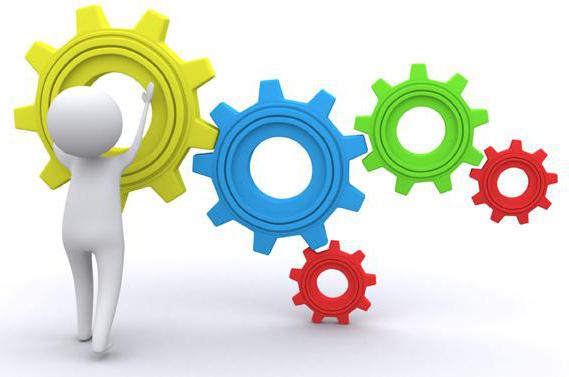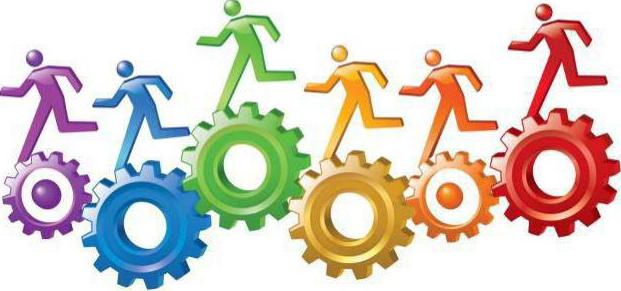Lean manufacturing (Lean system) is a special approach to the organization of enterprise management. It aims to improve the quality of work by reducing losses. Michael Vader talks about the intricacies of this concept in his book. Lean manufacturing tools are used at all stages of an enterprise, from design to product sales. Let's consider them in more detail. 
Lean tools and their essence
The basic principles were developed in the late 1980s and 1990s. The main goal of the system is to reduce the actions that do not add value to the manufactured product throughout its entire life cycle. When choosing tools and lean manufacturing methods, you must be guided by the following principles:
- Develop leadership on everyone management level process.
- Team leaders should develop long-term and short-term strategies, using information received from subordinates.
- Each leader is responsible for the results of their own projects.

The use of lean manufacturing tools is primarily aimed at improving the quality of work. It should be evaluated at all levels, and all employees should receive the results. The company must develop clear instructions and rules for each group of specialists. At the same time, it is necessary to ensure their close interconnection and mutual assistance. It is necessary to teach personnel to quickly identify production errors and correct them as quickly as possible. To attract all employees to the implementation of the concept, certain standards of key quality parameters should be developed.
Lean Tools: Mini Guide
The main task of enterprise management, striving to improve product quality through loss reduction, is the creation of a well-developed action plan. The development of instructions and rules should ensure the formation of a holistic system, increasing staff motivation. They must have a logical connection with each other. The following main tools of lean production are distinguished in the system:
- Visual management.
- TPM.
- "Right on time."
- Standard operating processes.
- Mapping
- Organization of places 5S.
- Inline quality.
TRM
Total Productive Maintenance is a universal process service. As mentioned above, lean manufacturing tools are aimed at reducing losses. As a rule, they are associated with equipment downtime due to breakdowns and excessive maintenance. The main idea of TPM is to involve all employees of the enterprise, and not just specialists of individual services, in the process. Thus, each employee must know the specifics of equipment maintenance and be able to quickly fix the problem on their own. The success of using TPM depends on how well the idea is conveyed and positively received by the staff. 
TPM stages
The introduction of lean manufacturing tools requires following a given pattern. A feature of TRM is that, based on this approach, a planned and smooth transformation of the service system operating at the enterprise into a more advanced one is possible. For this, the following stages are provided for within the framework of the TPM:
- Operational repair. He suggests an attempt to improve the existing system by identifying weak areas in it.
- Forecast based service.It is about organizing the collection of information about existing problems in the operation of equipment for subsequent data analysis. Along with this, machine prevention is planned.
- Corrective maintenance. Within its framework, equipment is being improved to eliminate the causes of systematic failures.
- Offline service. It involves the distribution of functions relating to the smooth operation of machines between the repair and maintenance services of the enterprise.
- Continuous improvement. This item includes all lean manufacturing tools. Continuous improvement actually means involving employees in a constant search for the causes of losses and suggesting ways to eliminate them.

Visual management
It represents such an arrangement of parts, tools, manufacturing operations, information about work efficiency, in which they will be clearly visible. This will provide process participants with the opportunity to assess the state of the entire system at a glance. The implementation of visual management is carried out in several stages:
- Organized jobs.
- Important information about safety, quality standards, procedures for performing operations and using equipment is visualized.
- The results are shown and the effectiveness of the processes is evaluated.
- Decisions are made in accordance with the visualized information.
Standard procedures
It should be noted that lean manufacturing tools are designed in such a way that their use can only be carried out comprehensively. Otherwise, the activity will not bring the expected effect. Within the framework of the system, special instructions are developed that determine the phased sequence of the execution of any operation. Oral recommendations are either distorted or forgotten. In this regard, they are replaced by written instructions for which the following requirements exist:
- They should be available for quick understanding. To do this, instead of long texts, diagrams, drawings, photographs, and special signs are used.
- Constantly reviewed and updated in accordance with changes in the order of operations.
- Developed in conjunction with employees. This will guarantee their authenticity and ensure their positive perception.

Right on time
Just In Time is a way to shorten the production cycle and involves the provision of services, materials and other resources only when they are needed. This allows you to carry out the following activities:
- To reduce the volume of parties to the minimum economically advantageous.
- Balance the number of employees, equipment, material.
- "Pull" products - the performance of current operations is determined by the needs of the coming.
- Use audiovisual methods to monitor product status and machine utilization.
- Delegate decision-making on managing the movement of goods to the lowest possible level.
Mapping
It represents the process of creating a simple graphical diagram that visually depicts the information and material flows that are required to provide services or products to end users. Mapping allows you to immediately identify narrow areas, and according to the results of its analysis to identify unproductive operations and costs. Based on this, an improvement plan is developed. As the time of creating values, it is customary to take the period of work by which the product is transformed so that the consumer is ready to pay for it. The stream of creation is all the actions that are necessary for its production. As practice shows, in most enterprises losses amount to 80%. 
Steps for creating a circuit
Mapping includes the following activities:
- Documentation of the current state.At this stage, the process of creating any value (or a group of them) is described in detail. At the same time, all conditions and operations, the required time, the number of information flows, the number of employees and so on are indicated.
- Analysis. Mapping is carried out to identify actions that form and do not form the value of the product. Some of the latter cannot be eliminated (for example, accounting). However, they need to be optimized as much as possible. Others can be eliminated or unified. To implement these tasks, you should find out the customer's requirements for the quality of the goods and their consumer properties. Based on this, those characteristics are established that cannot be excluded under any conditions, and those that can be adjusted by agreement.
- Creating a diagram of the future state. Such a map reflects the ideal situation after making all the planned changes. Along with this, hidden losses are revealed for their subsequent elimination.
- Develop an improvement plan. At this stage, methods for the transition to an ideal (future) state are determined, specific tasks are assigned, time frames and persons responsible for the implementation of the program are set.
Inline quality
This technique allows you to manage the state of the product directly at the place of its creation. Built-in quality provides:
- The ability to stop the conveyor by an employee in the event of a defect or in the event of a machine breakdown.
- Design the equipment so that troubleshooting and shutdown are automatic.
- Use of a common warning system in case of problems on the production line.
- Standardization of control procedures and assignment of responsibilities to machine operators.
- Use of measures to prevent unintentional errors by specialists or technology deficiencies.

5s
This system involves the effective distribution and organization of the workspace. It, like other tools of lean manufacturing, helps to increase the controllability of the zone and saves time. The system includes:
- Sorting.
- Rational use of space.
- Cleaning service.
- Standardization.
- Perfection.
The 5S system allows you to reduce the number of errors in documents, create a comfortable climate in the enterprise, and increase productivity. The undoubted advantage of this tool is the lack of the need to use new management theories and technologies.

